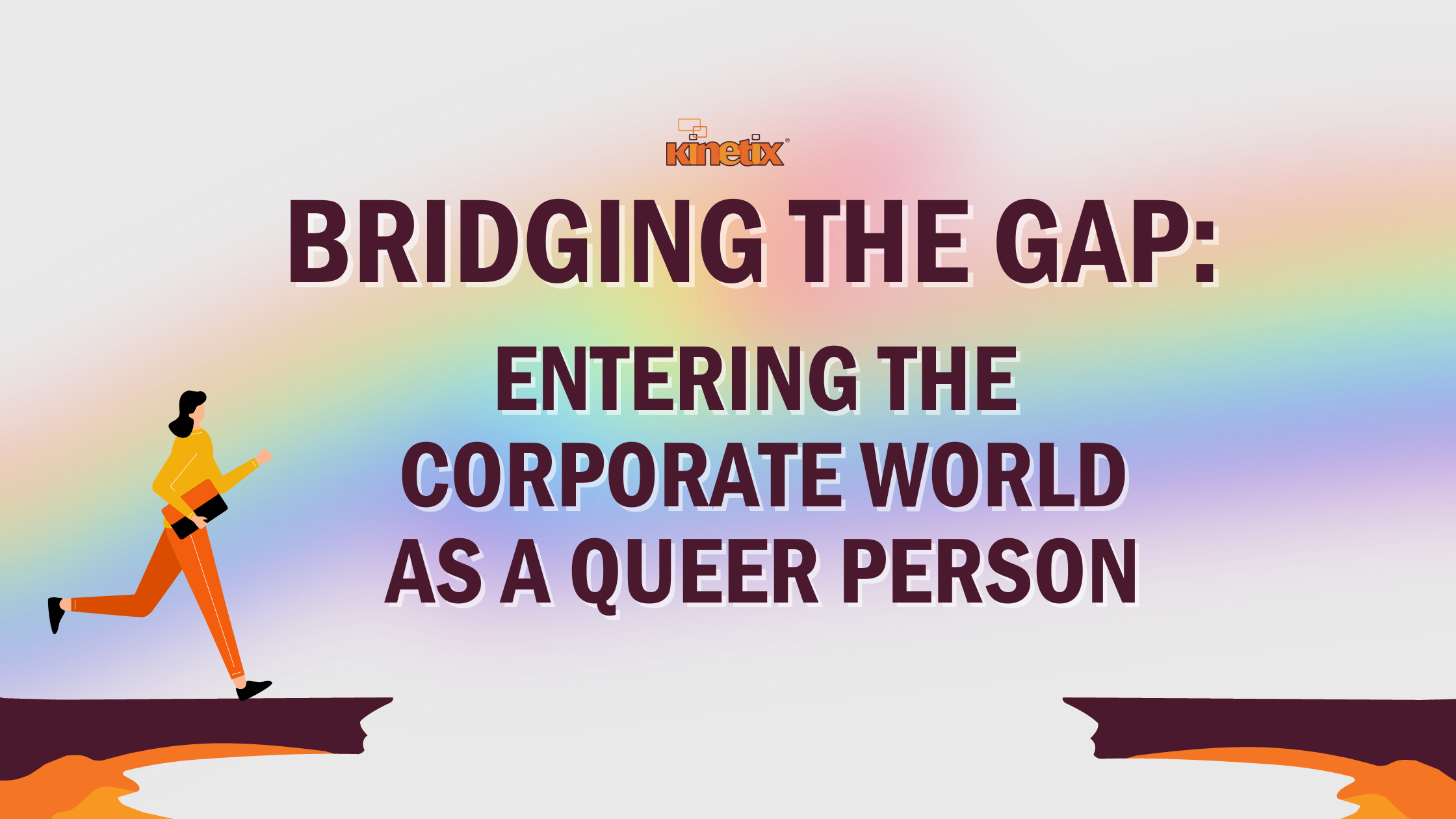
Kinetix’s Own Experience with the Homogenized Workplace
Traditionally speaking, the workplace has been dominated by heterosexual men. Being a woman-owned company, our CEO, Shannon Russo, has dealt with her fair share of challenges in the workplace. Due to there still being ten times as many companies run by men than women, Shannon stands out amongst her peers. With all the experience, respect, and awards she has garnered over the years for her success as a female entrepreneur, she shares that her mantra used to be “you have to be twice as good to be considered the same as men”. “Luckily”, she adds, “that’s not too hard”.
At her very first job, Shannon got experience on Wall Street where she learned about “being a good subordinate”. Apparently, she even had a small cut-out of a news article with this as the title taped to her desk. It was a reminder to her that in order to make change in a company, she had to first earn the respect of her superiors by doing her job well. Then, when trust and respect developed, she could pitch her ideas with certainty that they would be more seriously considered. Shannon implores those who are seeking to create inclusive change at their own job to do the same. Of course, this is easier said than done. Being part of a smaller company could bridge the gap more easily - but it's not impossible at larger companies!
Shannon’s hope for the younger generation as they enter the work force would be to “meet people where they are”. This means still fighting for what you know is right, but being tactful so your message is heard and not dismissed by those in charge, thus causing a greater divide.
Meeting People Where They Are
As previously mentioned, the best way to make change in the workplace comes through first establishing yourself as someone who should be listened to. While we all wish everyone would prioritize LGBT+ rights already, this is not yet the case. This means that there are three options that one can take when it comes to addressing this: fighting, compromising, or leaving.
Knowing When to Fight
Once you’ve developed a good relationship with your superiors, then the potential for real change can happen. When addressing change in the workplace, one must also look internally to decide if they can handle everything that fighting for what’s right entails. You must make sure you’re comfortable and confident not only discussing issues such as lack of inclusive language and discriminatory behavior with your manager, but also having these conversations continuously, as you may become the potential spokesperson for said issues. People also tend to respond better when you have a plan already in mind because it’s less work for them (thus they are more likely to be swayed). Overall, it’s imperative to note that none of this will matter if you don’t approach the conversation with tact. How you talk about this, when you talk about, and the words you use to talk about it could make or break your chance for change, even if your boss is an “ally”.
Knowing When to Compromise
Sometimes the conversation won’t go as you had hoped. Perhaps your boss mentions that the company already hosts a Pride month event or changes their logo to a rainbow to show solidarity. Of course, many queer folks feel that these actions are not genuine allyship, but rather an attempt to “grease the squeaky wheel”. So, what do you do? It’s important to know how much is too much. Maybe your plan for genuine allyship at your job includes the company donating to an LGBT+ supporting foundation and having all employees include their pronouns in their email signatures. However, your boss only supports doing one of those things. Just because only one idea gets approved, doesn’t mean you’ve failed. Baby steps may seem pointless in the grand scheme of things, but sometimes it’s the only way to work with those who aren’t as passionate about the same issues. Don’t push for everything all at once, or else you may not ever move even a baby step forward.
Knowing When to Give Up (But Not Lose Hope)
If after looking inward you find that you’re not one to be the spokesperson for LGBT+ issues in the office, then it may be worth looking into different companies to work at. A lot of people care about inclusivity in the workplace, but only mention the lack of it after they’ve been hired. Consider who the people are that are running the company you’re interested in beforehand, as well as how they have advertised themselves (and what they say they care about). However, this isn’t to say that you should be holding out for the “unicorn job”, because you might be waiting unemployed for a while. Think about what you’re willing to sacrifice and remember that while it is your place of work that you’re choosing, it is simply that: your place of work. You should always fight for what’s right, but you also don’t want to be out of the job, so consider what’s most important to you at the moment and know that it doesn’t make you any less supportive or a part of the LGBT+ community.
To The Employers
In a time where many companies are complaining about a lack of people wanting to work, it’s important to note the reality of the situation. A lot of companies are still operating on the old system of underpaying and overworking their employees, and the new generation of workers refuses to be a part of this. Add on the current generation’s additional layer of wanting an inclusive workspace for LGBT+ folk and filling job positions becomes increasingly difficult. With almost 40% of Millennials in a 2017 Deloitte study reporting that they “would leave their current organization for a more inclusive one”, changes are just as important on the employer’s part as the employee. One could argue that perhaps it’s even more important on the employer’s part since the companies that don’t change to attract workers from the current generation will be left behind.
There are plenty of HR and business blogs that post about how to make one’s company more inclusive for Pride month, so we won’t bore you with the details. However, 71% of respondents in the Deloitte study said that they would “prefer an organization that demonstrated inclusive behaviors” as opposed to inclusive events/programs. So, when it comes to Pride month and the rainbow-fication of company logos or the pizza parties for pride held in the break room, companies should note that if the support isn’t there year round, it’s performative.
TL;DR
For Pride month, Kinetix didn’t want to post another blog about “how to make your company more inclusive” like many other companies have done. Being a company that has many LGBT+ identifying people and allies that practice inclusive behaviors, we wanted to write a different perspective; one that we felt was beneficial to the queer person, rather than just to the employer. So, how is a queer person supposed to continue to strive forward when things still aren’t ideal? In short, don’t wait for the unicorn job, and be the bridge that brings your company or organization to the future with inclusive behaviors and representation.

